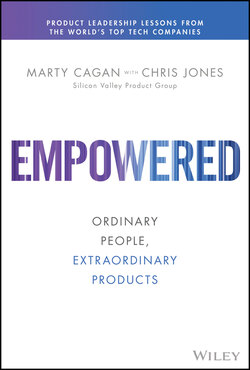Читать книгу EMPOWERED - Marty Cagan - Страница 27
User and Customer Knowledge
ОглавлениеThere really is no substitute for getting out of the office and visiting users and customers. That said, there is much to be gained by first taking advantage of the knowledge of your colleagues.
As you go about this learning, remember that each person you speak with brings their own perspective, and you're looking to understand that perspective and learn as many perspectives as possible.
If your company has a user research team, that's my favorite place to start, and it is a valuable relationship for the product manager to establish. User researchers are there to educate you—they know if you don't truly grok the issues, then you won't fix them.
Next, if you have a customer success or customer service team, that is a terrific resource. You want to learn who their favorite customers are, and their least favorite, and why. You will also want to spend quality time with this team to understand more about how customers perceive your product. But for now, you want to learn what they can teach you about your users and customers.
Product marketing is another valuable perspective on users and customers, and another important relationship for the product manager to establish. Product marketing will also have good insight into the broader sales and marketing organizations and the people you should talk with who will have useful perspectives.
In many companies, the founders or CEO have had more customer exposure than anyone, and they are another great resource. Ask the founders which customers they consider the most helpful for you to truly get to know and understand. You're not only looking for happy customers, just as you're not only looking for unhappy customers. You're after as many perspectives as you can get.
At this point, you're ready to go out there and meet real users and customers.
To set your expectations, when I (Marty) first took responsibility for a new B2B product, my manager wanted me to visit 30 customers (and further, he insisted that half be from outside the United States) before making any meaningful decisions. I don't think that the number 30 is special, but I can tell you it's not just 2 or 3. I typically recommend at least 15 customer visits as part of new PM onboarding.
When I returned from that trip, I had progressed from knowing virtually nothing to knowing as much as anyone in our organization. I leveraged what I learned—and the people I met and the relationships I established—for years.
Once you're actually sitting down with users and customers, a whole other topic is the techniques we use to learn, but that's the discovery techniques topic. With every interaction, at the very least, you're looking to learn: Are the customers who you think they are? Do they have the problems you think they have? How do they solve that problem today? What would it take to get them to switch?
Note that there are some obvious differences between customers that are businesses versus consumers, but the principle is the same in either case.
Note also that if you are joining an existing team with a skilled product designer and tech lead, then you absolutely want to learn as much from them as possible. And if you're joining a new team, then you want to include these two key people with you during your learning.
